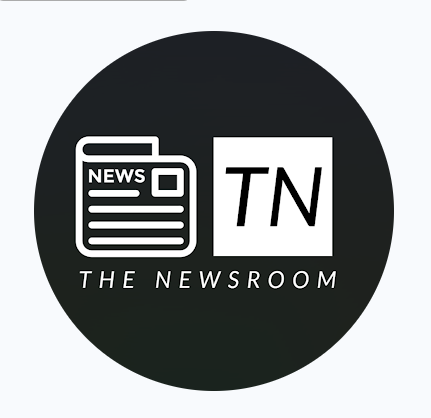
Create a Comprehensive Budget
Establishing a detailed budget is an essential foundational step for anyone looking to save money effectively in 2025. A comprehensive budget allows individuals to track their income and expenses meticulously, which is crucial for identifying spending patterns and potential areas for savings.
To create an effective budget, one must begin by meticulously tracking all sources of income, whether from salaries, freelance work, or additional side jobs. Following this, it is important to categorize expenses into fixed and variable costs. Fixed expenses include rent, mortgage payments, and insurance, while variable costs encompass groceries, entertainment, and discretionary spending. This categorization enhances one’s understanding of where money is being spent and where adjustments can be made.
Setting distinct savings goals is another vital component of budgeting. These goals could range from saving for an emergency fund to planning for a significant purchase or retirement. By setting realistic and measurable savings targets, individuals can remain motivated and focused on their financial objectives.
Various budgeting methods are available to suit different lifestyles and preferences. One popular approach is the 50/30/20 rule, where 50% of income is allocated to needs, 30% to wants, and 20% to savings and debt repayment. This simplistic method enables easy tracking and can be modified as financial situations change over time.
In this digital age, several budgeting tools and applications can assist in maintaining an effective budget. Programs like Mint, You Need a Budget (YNAB), or PocketGuard not only help in tracking expenses but also in setting and monitoring financial goals. Utilizing these resources can simplify the budgeting process, making it more accessible and effective.
Maximizing Savings through Discounts and Coupons
In today’s financial landscape, taking advantage of discounts and coupons has become a critical strategy for savvy shoppers looking to save money. By seeking out various deals, consumers can maximize their savings while still acquiring the items they need. One effective approach is to subscribe to deal websites, where users can receive daily alerts about discounts and promotions from various retailers. Such services often highlight limited-time offers that can lead to substantial savings if timed correctly.
Additionally, utilizing cashback apps provides another layer of financial reward for consumers. These applications allow users to earn back a percentage of their spending after making purchases at participating stores. This not only encourages mindful shopping but also ensures that consumers receive a rebate on their regular expenditures, helping them save money over time.
Seasonal sales present yet another opportunity for enhanced savings. Major retail events such as Black Friday, Cyber Monday, and end-of-season sales often feature significant markdowns on popular merchandise. Strategically planning purchases around these times can lead to impressive discounts, allowing consumers to stock up on essential items without breaking the bank.
Moreover, leveraging loyalty programs can significantly bolster savings. Many retailers offer points or rewards for repeat purchases, which can later be redeemed for discounts or free items. Prioritizing purchases at stores with established loyalty programs ensures that shoppers are receiving the utmost value for their spending.
Lastly, consumers should remain vigilant and proactive in searching for coupon codes before concluding any online transaction. Various websites and browser extensions aggregate coupon codes that can lead to immediate savings at checkout. By integrating these strategies into their shopping habits, individuals can effectively maximize their savings through discounts and coupons, making each purchase more financially beneficial.
Cut Unnecessary Subscriptions and Memberships
In an age where convenience often comes at a cost, many individuals find themselves inundated with subscription services and memberships that may not be essential to their day-to-day lives. A comprehensive evaluation of these expenses can lead to significant savings. The first step in this process is to take an inventory of all current subscriptions. This includes streaming services, gym memberships, and various monthly fees associated with apps or online services. Keeping track of these expenditures helps in understanding where money is flowing unnecessarily.
Once a clear picture has emerged, it is essential to assess the value derived from each subscription. Questions to consider include: How often do you use this service? Is there a duplicate of a more cost-effective option? Perhaps a single streaming service provides the same content as another, allowing for the cancellation of the less utilized one. Similarly, gym memberships may be redundant if your routine can be supplemented with home workouts or outdoor activities, which are often free or low-cost.
Alternatives to expensive subscriptions can provide enriching experiences without breaking the bank. For media consumption, consider sharing family plans or exploring free platforms that offer a wealth of content. Libraries often provide free access to various media, including movies, audiobooks, and e-books. Additionally, local community centers frequently host free events or activities, offering both entertainment and social engagement.
Finally, as you cut unnecessary subscriptions, remember to stay mindful of freshly emerging services that could fill gaps without adding financial strain. Regularly revisiting your subscriptions can help you stay aligned with your interests and budgetary goals. This proactive approach not only fosters smarter spending habits but also enhances overall financial health.
Embrace DIY and Cost-Effective Alternatives
In the pursuit of financial savings, adopting a do-it-yourself (DIY) mentality can prove highly beneficial. Home repairs, cooking, and general maintenance tasks represent areas where individuals can significantly cut costs without compromising quality. The DIY approach not only fosters creativity but empowers individuals to tackle projects that might typically require professional services, often at a fraction of the cost. For instance, minor plumbing issues such as leaky faucets or clogged drains can often be resolved with online tutorials and a simple toolkit, saving homeowners the expense of calling a plumber.
Additionally, cooking meals from scratch rather than relying on takeout or pre-packaged options is another area where considerable savings can be achieved. Learning to prepare budget-friendly meals using seasonal produce can minimize grocery bills while enhancing culinary skills. A versatile recipe book or online cooking courses can serve as excellent resources for those looking to expand their cooking abilities. By meal planning and employing DIY cooking methods, one can avoid the financial pitfalls associated with convenience foods.
Moreover, hobbies that involve DIY projects can lead to significant savings on household items and décor. For example, rather than purchasing expensive pieces of furniture, individuals might consider upcycling existing items or creating their own from affordable materials. Engaging in DIY crafts can also provide an enjoyable way to produce gifts or decorations, further enhancing one’s budget management. There are numerous online platforms, such as YouTube and DIY blogs, that offer comprehensive guides on a variety of projects, making it easier than ever to start.
In essence, the embrace of DIY practices and the utilization of cost-effective alternatives can lead to substantial monetary savings. By prioritizing skill development and resourcefulness, individuals can navigate everyday challenges while significantly enhancing their financial well-being.

